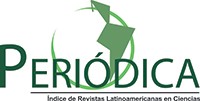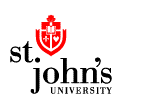NESTING BEHAVIOR OF THE ANDEAN HUMMINGBIRD (AMAZILIA FRANCIAE BOURCIER & MULSANT, 1846) AND THE ECOSYSTEM SERVICES IT PROVIDES IN THE PEASANT COMMUNITY OF YANANYAC, HUANCAVELICA, PERU
DOI:
https://doi.org/10.24039/rtb20222021471Keywords:
agriculture, cloudy forest, ecosystem services, pollinationAbstract
The objective of this work was to describe the nesting behavior of the Andean hummingbird (Amazilia franciae Bourcier & Mulsant, 1846) and to classify the ecosystem services it provides in the peasant community of Yananyac, Huancavelica, Peru according to the evaluation of the Millennium Ecosystems of the United Nations. Monitoring of ten Andean hummingbird nests was carried out in the months of April and May 2021 in an agricultural area of the peasant community of Yananyac. The nests were located between bushes and fruit-bearing plants, at an average height of 1.84 m. The nests were made with a base of dry leaves, cobwebs, lichens, feathers, flower stamens and seeds; covered with fibers, built mainly with the scales and trichomes of ferns, with an average depth of 18.4 mm. The eggs are white and oval in shape, measuring 7.44 mm wide and 12.3 mm long. The chicks presented different times of growth and development. The services provided by the Andean hummingbird according to the United Nations Millennium Ecosystem Assessment are regulation, support, provisioning and culture. The first being the most important due to the role that this species plays in the pollination of crops in the peasant community of Yananyac.
Downloads
References
Álava-Loor, C. G., & Asanza-Cedeño, J. A. 2019. Interacción entre colibríes y flora en el campus de la ESPAM MFL. Tesis de bachiller, Calceta: ESPAM MFL.
Astudillo-Sánchez, E.K. 2019. Patrones ecológicos del ensamble de la familia Trochilidae asociados a gradientes altitudinales en dos localidades de la cordillera Chongón Colonche, Santa Elena - Ecuador. Tesis para optar título de Doctora en Ciencias Ambientales, Universidad Nacional Mayor de San Marcos.
Barbosa-Camargo, S.F.; Cuenca, N.; Cuta, J.A.; Espinosa, A.S.; Higuera, A.M.; Igua, J.S.; Pulido, K.; Ramos, C.; Ruiz, C.A. & Vega, S.L. 2020. Aves asociadas a cafetales en el valle de tenza: panorama y recomendaciones para asegurar la prestación de servicios ecosistémicos brindados por las aves. Editorial UPTC, Universidad Pedagógica y Tecnológica de Colombia.
Barney, S. 2019. Management effects on hummingbird abundance and ecosystem services in a coffee landscape. Thesis degree of Master of Science, Conservation Ecology, School for Environment and Sustainability, University of Michigan.
Bravo-Naranjo, V. & Torrejón-Véliz, M. 2017. Nuevos antecedentes sobre la ecología reproductiva del picaflor del norte (Rhodopis vesper) en el centro-norte de Chile. Revista Chilena de Ornitología, 23: 3-9.
Cárdenas, Y. R. 2016. Capturando colibríes a través de un lente. Bio-grafía, 9: 163-166.
Chatellenaz, M.L. & Ferraro, L. 2000. Materiales vegetales y fúngicos en nidos de aves del Noreste Argentino y Paraguay. Facena, 16:103-119.
Collazos-González, S. A., & Cortes-Herrera, O. 2015. Listado de las aves de las reservas las Tangaras, Gorrión-Andivia y Lora Carirosada de los Andes Occidentales de Colombia. Conservación Colombiana, 23:58-81.
Escobar-Lasso, S. & Martínez, J. 2014. Descripción del comportamiento de anidación de la Esmeralda andina Amazilia franciae (Apodiformes, Trochilidae) en la región andina de Colombia. Historia Natural (Tercera Serie), 4: 45-54.
Fleming, P.A.; Bakken, B.H.; Lotz, C.N. & Nicolson, S.W. 2004. Concentration and temperature effects on sugar intake and preferences in a sunbird and a hummingbird. Functional Ecology, 18: 223-232.
Gegear, R.J. & Burns, J.C. 2007. The birds, the bees and the virtual flowers: can pollinator behavior drive ecological speciation in flowering plants?. American Naturalist, 170: 551-566.
González, O. & Wethington, S. 2014. Observations on hummingbirds and their nectar resources atthe cloud forest of Manu road, Peru. The Biologist (Lima), 12: 109-115.
Grupo de expertos de la evaluación de los ecosistemas del milenio. 2005. Evaluación de los ecosistemas del milenio. Informe de síntesis. World Resource Institute. Washington DC.
Hadley, A.S. & Betts, M.G. 2009. Tropical deforestation alters hummingbird movement patterns. Biology Letters, 5: 207–210
Mackenzie, A.M., Dudenhoeffer, M., Bangoura, B., Sehgal, R.N.M., Tell, L.A., Godwin, B.L. & Ernest, H.B. 2022. Prevalence and diversity of haemosporidians in a migratory high-elevation hummingbird in North America. Parasitology Research, 121: 769–773.
Mcmanus, K. 2018. Para rescatar el planeta, podemos empezar por los colibríes. The New York Times (14 de setiembre del 2018): https://www.nytimes.com/es/2018/09/24/espanol/colibries-rescate-planeta.html.
Memmott, J.; Craze, P.G.; Waser, N.M. & Price, M.V. 2007. Global warming and the disruption of plant-pollinator interactions. Ecology Letters, 10: 710-717.
Ministerio del Ambiente [MINAM], 2019. Listado de Especies de Fauna Silvestre CITES - Perú. Dirección General de Diversidad Biológica.
Ornelas, J.F. 2010. Nests, Eggs, and Young of the Azure-crowned Hummingbird (Amazilia cyanocephala). The Wilson Journal of Ornithology, 122: 592-597.
Parra-Ochoa, E. 2014. Aves silvestres como bioindicadores de contaminación ambiental y metales pesados. CES Salud Pública, 5: 59-69.
Pinzón, J.S.C., Molano, D.F., Villa, S.J.T., & Nieto, M.D.P.S. 2018. Análisis de la Interacción planta-colibrí en la reserva Mirador Recreo: una perspectiva coevolutiva. Revista de la Asociación Colombiana de Ciencias Biológicas, 1: 114-120.
Ravello, J. M. C. & Masias, M. I. P. 2018. Diversidad de aves del bosque seco interandino Shumaya, Huancabamba, Piura. Revista Tayacaja, 1: 82–107.
Rebollo, S.; Rey-Benayas, J.M.; Villar-Salvador, P.; Pérez-Camacho, L.; Castro, J.; Molina-Morales, M.; Leverkus, A.B.; Baz, A.; MartínezBaroja, L.; Quiles, P.; Gómez-Sánchez, D.; Fernández-Pereira, J.M.; Meltzer, J.; Monteagudo, N.; Ballesteros, L.; Cayuela, L.; de las Heras, D.; García-Salgado, G. & Martínez-Hesterkamp, S. 2019. Servicios de la avifauna (high-mobile link species) en mosaicos agroforestales: regeneración forestal y regulación de plagas. Ecosistemas, 28: 32-41.
Restrepo, M. P. & Monroy, A. P. 2020. Colibríes, una historia natural de belleza y polinización. Revista Ambiental ÉOLO, 1:12-12.
Rocca, M.A. & Sazima, M. 2010. Beyond hummingbird-flowers: the other side of ornithophily in the neotropics. Oecologia Australis, 14: 67-99.
Sekercioglu, C.H. 2012. Bird functional diversity and ecosystem services in tropical forests, agroforests and agricultural areas. Journal of Ornithology, 153: 153–161.
Simon, J.E. & Pacheco, S. 2005. On the standardization of nest descriptions of neotropical birds. Revista Brasileira de Ornitologia, 13: 143-154.
Tinoco, B.A.; Santillán, V.E. & Graham, C.H. 2018. Land use change has stronger effects on functional diversity than taxonomic diversity in tropical Andean hummingbirds. Ecology and Evolution, 8: 3478–3490.
Valqui, M. 2010. Las Aves del Santuario Nacional Tabaconas Namballe. pp 43-50. Mena, J.L. & Valdivia, G, (Eds.). En: Conociendo el santuario nacional Tabaconas Namballe. World Wildlife Fund – Oficina del Programa.
Vásquez, J.L. & Yánez, P. 2017. Los colibríes del noroccidente del Distrito Metropolitano de Quito: un atractivo turístico natural. Qualitas, 13: 81-106.
Walters, M. 2006. Colour in birds’ eggs: the collections of the Natural History Museum, Tring. Historical Biology, 18:141-204.
Wenny, D.G.; Devault, T.L.; Johnson, M.D.; Kelly, D.; Sekercioglu, C.H.; Tomback, D.F. & Whelan, C.J. 2011. The need to quantify ecosystem services provided by birds. The Auk, 128: 1–14.
Wethington, S.M. & Finley, N. 2009. Addressing hummingbird conservation needs: An initial assessment. Proceedings of the Fourth International Partners in Flight Conference: Tundra to Tropics: Connecting Birds, Habitats, and People. Partners in Flight.
Whelan, C.J.; Şekercioğlu, Ç.H. & Wenny, D.G. 2015. Why birds matter: from economic ornithology to ecosystem services. Journal of Ornithology, 156: 227–238.
Whelan, C.J.; Wenny, D.G. & Marquis, R.J. 2008. Ecosystem services provided by birds. Annals of the New York academy of sciences, 1134: 25-60.
Published
How to Cite
Issue
Section
License

This work is licensed under a Creative Commons Attribution-NonCommercial-NoDerivatives 4.0 International License.
Objeto: El AUTOR-CEDENTE transfiere de manera TOTAL Y SIN LIMITACIÓN alguna al CESIONARIO (Revista The Biologist (Lima)) los derechos patrimoniales que le corresponden sobre sus obras por el tiempo que establezca la ley internacional. En virtud de lo anterior, se entiende que el CESIONARIO adquiere el derecho de reproducción en todas sus modalidades, incluso para inclusión audiovisual; el derecho de transformación o adaptación, comunicación pública, traducción, distribución y, en general, cualquier tipo de explotación que de las obras se pueda realizar por cualquier medio conocido o por conocer en el territorio nacional o internacional.
Remuneración: La cesión de los derechos patrimoniales de autor que mediante este contrato se hace será a título gratuito.
Condiciones y legitimidad de los derechos: El AUTOR-CEDENTE garantiza que es propietario integral de los derechos de explotación de la(s) obra(s) y en consecuencia garantiza que puede contratar y transferir los derechos aquí cedidos sin ningún tipo de limitación por no tener ningún tipo de gravamen, limitación o disposición. En todo caso, responderá por cualquier reclamo que en materia de derecho de autor se pueda presentar, exonerando de cualquier responsabilidad al CESIONARIO.
Licencia de acceso abierto: El AUTOR-CEDENTE autoriza que manuscrito publicado en la Revista Científica The Biologist (Lima) (versión Impresa ISSN 1816-0719, versión en línea ISSN 1994-9073) permanece disponible para su consulta pública en el sitio web http://revistas.unfv.edu.pe/index.php/rtb/index y en los diferentes sistemas de indexación y bases de datos en las que la revista tiene visibilidad, bajo la licencia Creative Commons, en la modalidad Reconocimiento-No comercial- Sin Trabajos derivados –aprobada en Perú, y por lo tanto son de acceso abierto. De ahí que los autores dan, sin derecho a retribución económica, a la Escuela Profesional de Biología, Facultad de Ciencias Naturales y Matemática de la Universidad Nacional Federico Villarreal (EPB - FCCNM - UNFV), los derechos de autor para la edición y reproducción a través de diferentes medios de difusión.









































